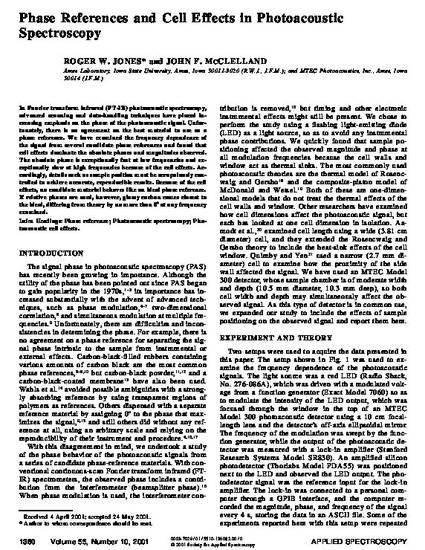
Article
Phase References and Cell Effects in Photoacoustic Spectroscopy
Applied Spectroscopy
Document Type
Article
Disciplines
Publication Date
10-1-2001
DOI
10.1366/0003702011953487
Abstract
In Fourier transform infrared (FT-IR) photoacoustic spectroscopy, advanced scanning and data-handling techniques have placed increasing emphasis on the phase of the photoacoustic signal. Unfortunately, there is no agreement on the best material to use as a phase reference. We have examined the frequency dependence of the signal from several candidate phase references and found that cell effects dominate the absolute phases and magnitudes observed. The absolute phase is exceptionally fast at low frequencies and exceptionally slow at high frequencies because of the cell effects. Accordingly, details such as sample position must be scrupulously controlled to achieve accurate, reproducible results. Because of the cell effects, no candidate material behaves like an ideal phase reference. If relative phases are used, however, glassy carbon comes closest to the ideal, differing from theory by no more than 8° at any frequency examined.
Rights
Systematic or multiple reproduction or distribution to multiple locations via electronic or other means is prohibited and is subject to penalties under law.
Copyright Owner
Society for Applied Spectroscopy
Copyright Date
2001
Language
en
File Format
application/pdf
Citation Information
Roger W. Jones and John F. McClelland. "Phase References and Cell Effects in Photoacoustic Spectroscopy" Applied Spectroscopy Vol. 55 Iss. 10 (2001) p. 1360 - 1367 Available at: http://works.bepress.com/roger_jones/9/
This paper was published in Applied Spectroscopy 55 (2001): 1360 and is made available as an electronic reprint with the permission of OSA. The paper can be found at the following URL on the OSA website: doi:10.1366/0003702011953487.